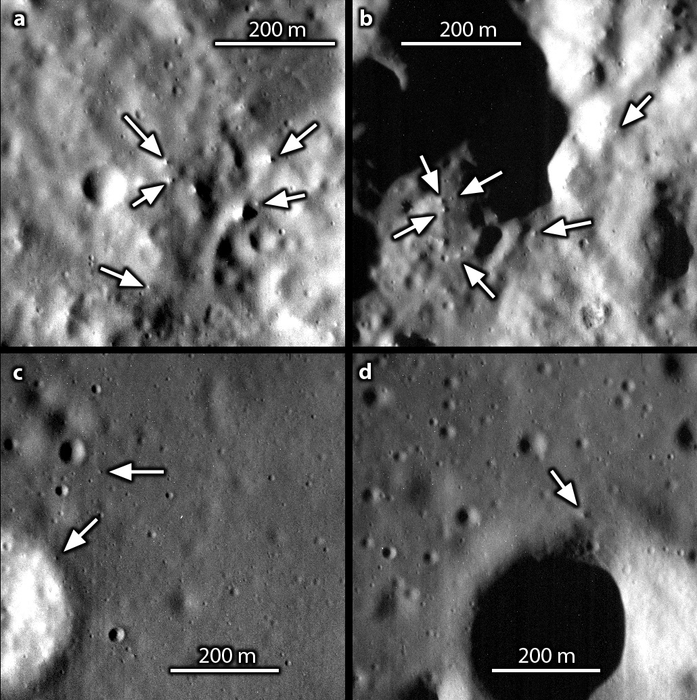There are fewer boulders lying around on Mercury than on Moon
Mercury can very well be imagined as an extreme version of the Earth’s moon. The rocky planet orbits so close to the sun that it is exposed to much stronger temperature fluctuations than the moon. Water, like on the Moon, exists only in the few areas that are never exposed to sunlight. Nevertheless, as NASA’s Messenger probe photos have shown, there are a few characteristic differences at the surface. For example, there are far fewer boulders lying around on Mercury.
Why is that? An international group of planetary scientists has now analyzed this for the first time and described it in the journal Iсarus. To study the boulders on Mercury, the researchers sifted through nearly 3000 images taken in 2015 from aboard the Messenger spacecraft as it orbited Mercury. They detected only 14 boulders up to 5 meters in size (smaller objects are not currently visible). The scientists then examined images of the lunar surface. The quality of the lunar images (taken by the Lunar Reconnaissance Orbiter from 2009) is much better, so they were artificially calculated worse. As a result, «boulders occur about 30 times less frequently on Mercury than on the Moon,» says Mikhail Kreslavsky, a researcher at the University of California.
The difference is determined by three factors, the scientists believe. The first factor is the smallest meteorites, known as micrometeorites. Because of Mercury’s proximity to the sun, it is more than 50 times more likely to be hit by them, and they have 1.5-5.5 times more energy. As a result, the microscopic particles of interplanetary dust that hit Mercury’s rocks grind them down like an abrasive almost 15 times faster than on the Moon. The second factor is a thicker regolith layer on Mercury’s surface, resulting from the intense micrometeorite bombardment. It dampens the impacts of larger space objects, so fewer rock fragments are torn from its surface as well. Together, this is likely the main reason for the low number of rock fragments on Mercury.
The third factor is the cyclic temperature variations that occur on Mercury during a solar day (176 Earth days). As the closest planet to the Sun, Mercury has the largest temperature variations of any planet in the solar system: from 80 to 700 K. «A large thermal stress, 2.5 times that of the Moon, leads to rapid wear of the material, numerous large and small cracks, and eventual destruction of the boulders on Mercury. On the Moon, on the other hand, the boulders reach a lifetime of 100 million years,» said Maria Gritsevich, senior researcher at Ural Federal University and the Finnish Geospatial Research Institute.
